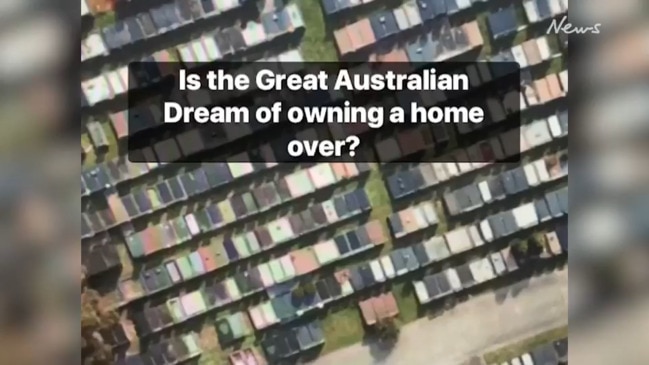Dire rate rise warning: 1 in two homes ‘under water’
More than one in two NSW households will be in the financial danger zone, if the RBA, as expected, raises interest rates on Melbourne Cup Day next week, shock new data has revealed.

Property
Don't miss out on the headlines from Property. Followed categories will be added to My News.
More than one in two NSW households will be sitting squarely in the financial danger zone, if the RBA, as expected, raises interest rates next week.
With most economists, including those from the top four big banks, expecting the Reserve Bank of Australia to raise the cash rate past 4.1 per cent on Tuesday, the devastating impacts of skyrocketing rates and the cost of living crisis have been laid bare via worrying new data.
According to exclusive analysis from Digital Finance Analytics, 55 per cent of NSW households with a mortgage will be in the red if the rate is raised by 0.25 per cent.
A rate rise of that magnitude will push 57,990 more mortgaged households into a ‘negative cash flow’ position – that is they are spending more money than they are making. Meaning, 614,833 of 1,126,495 mortgaged households in NSW would have a negative cash flow.

Currently, 556,843 of NSW mortgaged households have a negative cash flow. That’s up almost 20 per cent from 459,823 households in May 2022, when the RBA began hiking rates from a record low of 0.1 per cent.
The Local Government Areas of Blacktown (47,178 households with a negative cash flow), Campbelltown (26,570), Lake Macquarie, (25,882) Fairfield (25,737) and The Hills Shire (23,689) are currently the locations worst affected. Households in this position could soon default on their loans or be forced to sell.
“If a household is paying out more each month including the mortgage repayments, compared with income received, they are in stress,” Digital Finance Analytics founding principal data scientist and banking sector analyst Martin North said.
“This is not defined by a set proportion of income going on the mortgage. They may have assets they could sell, but nevertheless in cashflow terms they are underwater. More than 10 per cent under water, then they are under severe stress. Of course they may have assets like deposits, or put more on credit cards, but generally households under pressure spend less, hunker down, and some, two to three years later end up selling or even defaulting. Stress indicators are an early warning sign of potential issues ahead.”
On a national scale, if the cash rate rises by 0.25 per cent, 201,968 more Aussie households with a mortgage will slip into that precarious financial position of mortgage stress, so that the budgets of 2,133,842 out of 3,857,058 homes (or 55 per cent) will be in the red.
New RBA governor Michele Bullock is expected to push the cash rate higher for the first time since she took over from controversial from Philip Lowe on September 18.
After the cash rate sat at a record low of 0.1 per cent from November 2020 to April 2022, the RBA swiftly switched through the gears in precedented fashion to raise the rate to 4.1 per cent in June, where it has sat since.
However most experts now believe, the RBA will now go higher on Melbourne Cup Day in a further move to reign in underlying inflationary pressures.
However James Algar, Principal at Mortgage Choice said there are some measures mortgaged households can take to sure up their financial situation.
“The first piece of advice is to understand what interest rate rises look like for your given circumstances. Go and get some advice, don’t just assume anything,” he said.
Reviewing your home loan every six to twelve months, talking to a broker and calling your bank to see if they can give you a better rate were among his top tips.
“We are actually seeing some more evidence that banks are fighting harder to retain customers, if you don’t ask for a discount you’re not going to get one,”
Mr Algar said reviewing your budget to see what subscriptions, bills or costs you can cut back on that won’t dramatically change your lifestyle was essential and consider an offset account.
“I still come across people that have money tied up in savings accounts instead of putting it in the offset account with their home loan that would save them thousands,” Mr Algar said.
When considering refinancing, start the process well before your fixed rate ends.
“It can take up to two months for refinancing to get done, so you want to make sure you’re prepared,” he said.
“Definitely before you’ve run out of money – its going to be significantly harder to refinance if your current loan is not being maintained,”
Mr Algar warned against changing rates to something that had a “shiny” incentive, without shopping around and getting advice.
“Understand what a good rate looks like for your circumstances, understand the hidden costs and what are the pitfalls,” said.
Also, weigh up the costs and benefits of extending or changing your loan and know that it comes at a higher price long term if you extend your loan out.
“Most brokers even if they can’t help you switch will help you get your current rate down,” Mr Algar said.
Originally published as Dire rate rise warning: 1 in two homes ‘under water’




